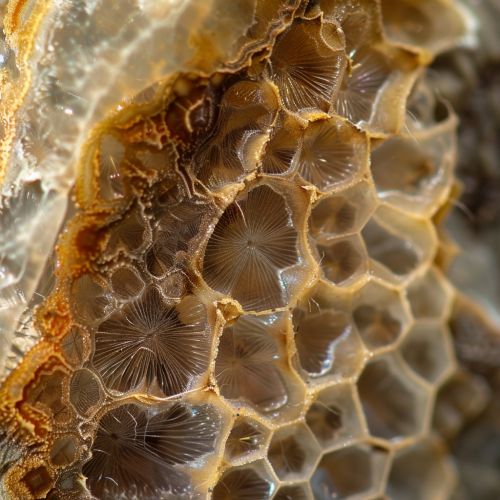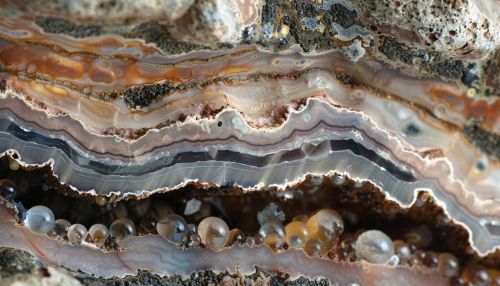Poikiloblast
Introduction
A poikiloblast is a type of metamorphic mineral aggregate that exhibits a specific growth pattern during metamorphism. The term is derived from the Greek words 'poikilos', meaning 'varied', and 'blastos', meaning 'germ' or 'sprout'. This term is often used in the field of petrology, which is the scientific study of rocks.


Formation and Characteristics
Poikiloblasts form during the process of metamorphism, which involves the transformation of one type of rock into another due to heat, pressure, or chemical processes. These mineral aggregates grow in a specific pattern, often enveloping and incorporating smaller grains of other minerals within their structure. This results in a mosaic-like appearance, with the smaller mineral grains appearing as inclusions within the larger poikiloblast.
The formation of poikiloblasts is a complex process that involves several stages. Initially, during the early stages of metamorphism, small mineral grains begin to grow within the parent rock. As metamorphism progresses, these grains continue to grow, eventually enveloping the smaller mineral grains around them. This results in the formation of a poikiloblast, which is characterized by its larger size and the presence of smaller mineral inclusions.
Poikiloblasts are typically composed of metamorphic minerals such as garnet, staurolite, and andalusite. The specific mineral composition of a poikiloblast can provide valuable information about the conditions under which it formed. For example, the presence of garnet in a poikiloblast can indicate high-pressure metamorphic conditions, while the presence of andalusite can suggest lower-pressure conditions.
Identification and Study
The identification of poikiloblasts is typically done through microscopic examination of thin sections of rock. This involves slicing a small piece of rock into a thin section, which is then examined under a polarized light microscope. Under the microscope, poikiloblasts can be identified by their larger size and the presence of smaller mineral inclusions.
The study of poikiloblasts can provide valuable insights into the history and conditions of metamorphism. By examining the mineral composition and growth patterns of poikiloblasts, geologists can infer the temperature, pressure, and chemical conditions under which the metamorphism occurred. This information can be used to reconstruct the geological history of an area, including the tectonic processes that have shaped it.
Significance in Geology
Poikiloblasts play a significant role in the field of geology. Their unique growth patterns and mineral composition provide valuable clues about the conditions under which metamorphic rocks form. This information can be used to understand the geological history of an area, including the tectonic processes that have shaped it.
In addition, the study of poikiloblasts can also contribute to our understanding of the Earth's interior. The conditions under which poikiloblasts form - high temperatures, pressures, and chemical activity - are similar to those found deep within the Earth's crust. Therefore, by studying poikiloblasts, geologists can gain insights into the processes that occur within the Earth's interior.
